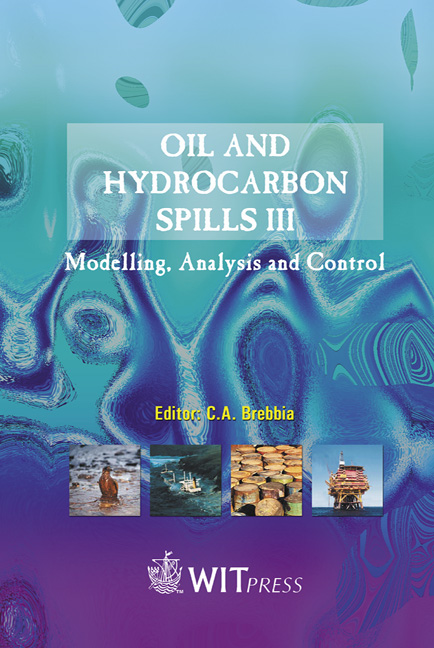Cleaning Debris From Oil Spills By Thermal Desorption
Price
Free (open access)
Transaction
Volume
59
Pages
Published
2002
Size
640 kb
Paper DOI
10.2495/OIL020171
Copyright
WIT Press
Author(s)
J. T. Araruna Jr., V. L. O. Portes, M. G. da Silva, M. S. Sthel, S. Tibana, D. U. Schramm & H. Vargas
Abstract
Environmental news in Brazil has been dominated by oil spills in the past years. The most direct method of cleaning up beaches affected by a spill is simply to remove oiled debris by digging them up and carrying them to a landfill. However, the disposal of oiled debris does not solve the overall problem, since the landfill remains a potential problem and a continuity liability to the operators. This paper intends to evaluate a promising technique to clean up debris from oil spills, which employs high temperatures to convert compounds, such as oil, into gas and water. Results indicated that oiled debris emit methane and ammonia at ambient temperature, and these emissions tend to increase with rising temperatures. Heating up oiled debris to temperature above 300oC was proven to be an effective remediation method. When comparisons were made about the efficiency of thermal desorption and chemical washing, it was observed that the former was not sufficiently effective in removing oil to the extremely low levels of residual concentration required to restore the natural appearance of sands. Finally, in situ thermal desorption seems to be an unique system for cleaning debris from oil spills. It is simple, fast and avoids all the harassment associated to digging up the soil for disposal. 1 Introduction Environmental news in Brazil has been dominated by oil spills in the past years. On November 24, 2001, a ruptured pipeline spilled 100,000 litres of crude oil into Guanabara Bay, Rio de Janeiro. In spite of the spill response effort, a large slick was formed on the Bay stretching from Fiscal Island and Santos Dumont Airport, on Rio de Janeiro’s side, to Flechas Beach, on Niteroi’s side.
Keywords





